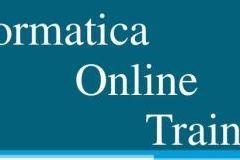This will be 30 hours course , which includes basics of SQL ,UNIX and Informatica power center with dataware house concept.This will be full interactive session and will have minimum 3 demo classes.We will have practical session with real time scenario based example.If any student completes the course and still feel to attend the course he can rejoin the next cycle course without paying anything.
TopicsÂ
Informatica Power Center Clients
The following are the power center clients are
- Power center designer
- Power center workflow manager
- Power center work flow monitor
- Power center repository manger
Introduction to Informatica
Informatica Architecture Tutorial
How to Install Informatica PowerCenter
How to Configure Clients and Repositories in Informatica
Source Analyzer and Target Designer in Informatica
Mappings in Informatica
Workflows In Informatica
Workflow Monitor in Informatica
How to Debug Mappings in Informatica
Session Objects in Informatica
Introduction to Transformations in Informatica and Filter Transformation
Source Qualifier Transformation in Informatica
Aggregator Transformation in Informatica
Router Transformation in Informatica
Joiner transformation in Informatica
Rank Transformation in Informatica
Sequence Generator Transformation in Informatica
Transaction Control Transformation in Informatica
Lookup and Re-usable transformation in Informatica
Normalizer Transformation in Informatica
Performance Tuning for Transformation in Informatica
Â
ORACLE :
Â
- Write queries against single and multiple tables, manipulate data in tables and create database objects.
- Use single row functions to customize output.
- Invoke conversion functions and conditional expressions.
- Use group functions to report aggregated data.
- Create PL/SQL blocks of application code that can be shared by multiple forms, reports and data management applications.
- Develop anonymous PL/SQL blocks, stored procedures and functions.
- Declare identifiers and trap exceptions.
- Use DML statements to manage data.
- Use DDL statements to manage database objects.
- Declare PL/SQL Variables.
- Conditionally control code flow (loops, control structures).
- Describe stored procedures and functions.
- Retrieve row and column data from tables.
Â






